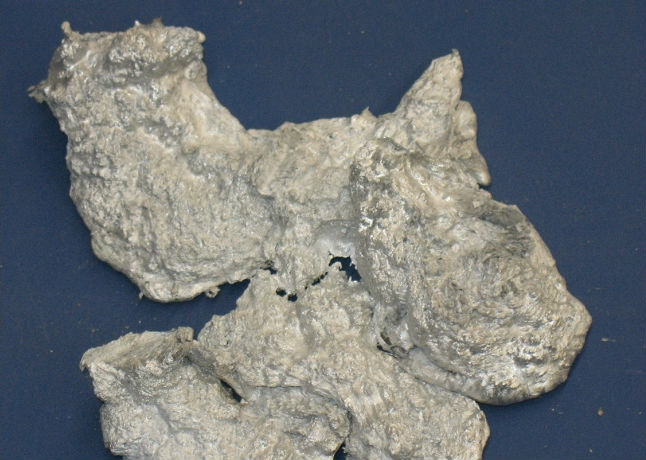Jun 3 2020
Individuals exposed to ultraviolet (UV) radiation can face an increased risk of skin cancer and other medical disorders. The risk is further increased when sunlight—the natural source of UV radiation—is integrated with artificial sources like UV lamps for medical treatment, among others.
 Doped with carbon and magnesium, the material becomes thermoluminescent in response to UV radiation. Image Credit: Wikimedia Commons.
Doped with carbon and magnesium, the material becomes thermoluminescent in response to UV radiation. Image Credit: Wikimedia Commons.
The detection and quantification of UV exposure in various settings was the scope of a research project carried out in Brazil at the São Paulo Federal Institute of Education, Science, and Technology (IFSP) together with the University of São Paulo Physics Institute (IF-USP).
The scientists analyzed the UV radiation sensitivity of aluminum oxide doped with carbon as well as magnesium (Al2O3:C,Mg), as detailed in the article titled “Thermoluminescence of UV-irradiated α-Al2O3:C, Mg.” The study was published in the Journal of Luminescence.
Carbon-doped aluminum oxide [Al2O3:C] was already well known for its acute sensitivity to various kinds of radiation, such as X-rays and beta and gamma rays. It is used for personal and environmental UV dosimetry. What we discovered was that the material also responds to UV when it is doped with magnesium as well as carbon.
Neilo Marcos Trindade, Study First Author and Professor, Agencia FAPESP
The reaction in question is thermoluminescence—light produced by a material when heated after being subjected to radiation.
Magnesium doping promotes a large number of defects in the crystal, and this makes the material respond even better to ionizing radiation and to nonionizing radiation like UV.
Neilo Marcos Trindade, Study First Author and Professor, Agencia FAPESP
The analysis was carried out by Trindade and two undergraduates, Maicon Gois Magalhaes and Matheus Cavalcanti dos Santos Nunes, in association with Elisabeth Mateus Yoshimura, who works as a professor at IF-USP, and Luiz Gustavo Jacobsohn, also a professor at Clemson University in the United States.
The study was financially supported by FAPESP through a Scientific Initiation Scholarship awarded to Magalhães, a Regular Research Grant awarded to Trindade, and a Scientific Initiation Scholarship awarded to Nunes.
Other Findings
Besides the major discovery, which allows such crystals to be used for detecting UV, Trindade together with his students made two other crucial findings. The first finding was that the material’s response to UV radiation is similar to its response to beta radiation, implying that several measurements of beta radiation carried out so far may have been impacted by UV interference.
The second finding was that both responses vary based on various patterns, allowing the UV interference issue to be resolved in the upcoming devices. The material reacts linearly to beta radiation: as its exposure to ionizing radiation increases, its luminescence also increases in an incremental manner in a constant curve. With regard to the UV radiation, the luminescence of the material does not alter in a linear manner.
There is a saturation point after which the luminescence ceases to intensify even as exposure continues.
Neilo Marcos Trindade, Study First Author and Professor, Agencia FAPESP
Journal Reference:
Trindade, N. M., et al. (2020) Thermoluminescence of UV-irradiated α-Al2O3:C,Mg. Journal of Luminescence. doi.org/10.1016/j.jlumin.2020.117195.
Source: http://agencia.fapesp.br/home/